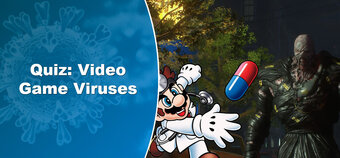Our long held suspicions have been confirmed... Polish developer Techland are mad scientists. You see much like Dr. Frankenstein used the bodies of the recently deceased to create his monster, so too have Techland, reanimating the popular survival horror game, Dead Island's corpse, stitching on body parts from Mirrors Edge and Far Cry to bring their morbid creation to life. The end result - Dying Light. A zombie horror survival game.
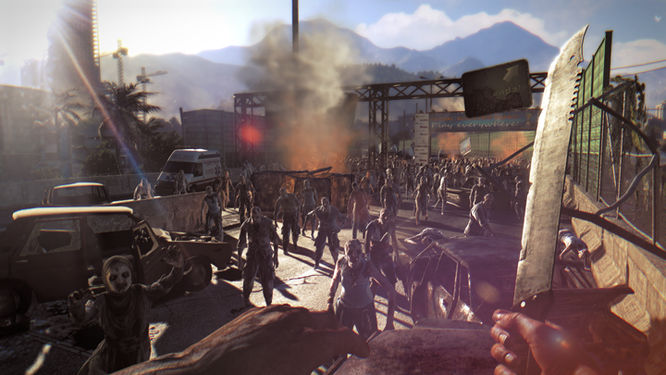
Welcome to Harran. There's a lot of people here... just not many living.
Now before we start this autopsy let's get a couple facts out of the way. Dying Light is an open world first person zombie killing/survival game by Polish developer Techland. You might remember them from their previous titles, the open world first person zombie killing/survival games Dead Island and Dead Island Riptide (points for originality). 'So this is Dead Island 2 right?' I hear you ask. Well, interestingly enough, Dead Island 2 is in the hands of Deep Silver, the publisher of the first game. Instead Techland teamed up with Warner Bros. to bring us Dying Light - a game which (purely coincidentally) plays a lot like Dead Island, but with a healthy dose of parkour added in for good measure.
Story wise Dying Light sees you in the role of Kyle Crane, a special forces agent (who could have been replaced with a potato sack with eyes drawn on considering how bland the character is) dropped into the zombie infested Harran to retrieve a file on behalf of the humanitarian group known only as the GRE (or Global Relief Effort for those who hate acronyms). Why they chose Agent Crane is anyone's guess, as he seems to be completely incompetent. The opening cut scene alone sees him botch a parachute landing, get infected with the zombie virus and get his would be rescuer killed in the process. The truth is that it really doesn't matter who you are, as from that point on you'll be working undercover, completing missions for a group of survivors (while searching for the missing file of course).
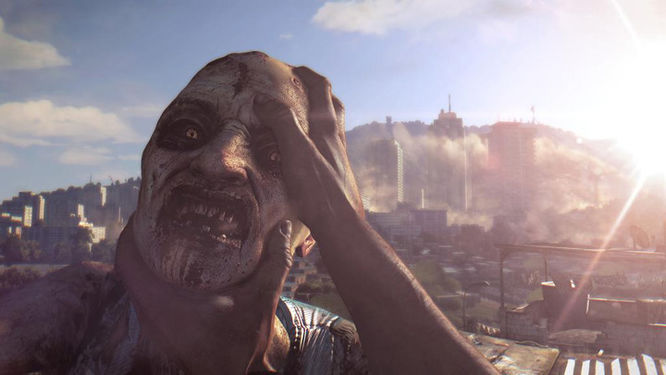
Agent Crane's new job as the local dentist was proving harder than he had first thought
Let's not mince our words here Dying Light plays just like Dead Island, and by that we mean that it feels exactly the same (not that this is a bad thing). Including a combat system with a focus on melee combat, which means continually whacking the undead in the face with a pipe/wrench/etc. until you cause either the zombie's head to explode in a shower of blood and brain matter, or the weapon breaks. To avoid the latter, you can collect scrap you find to upgrade your weapons or build new ones (just like Dead Island), and you can even add familiar element effects like electricity, fire or poison effects to do extra damage. Sounds familiar right?
You could say this is just Dead Island with a new coat of paint, and less goofiness (no 'who do you voodoo b**ch' here) then - and we would, if not for the new parkour features Techland has thrown in, to help you explore Harran. Now, if like us you've played your fair share of first person shooters, then you'll probably know that platforming can be extremely difficult to pull off in first person, especially without adding in inhuman super jumps, double jumps or a jet pack. Mirrors Edge was one of the few games to almost get this right for the most part and it seems Dying Light has followed suit.
Traversing the open world sandbox, scaling buildings and leaping from impossible heights is some of the most fun you'll have while playing - when it works of course. And unfortunately a lot of the time it doesn't. Instead, you'll find yourself falling to an untimely death because the game didn't register the ledge being grabbed. It happens more frequently then we'd like to admit. Fortunately, the world is pretty big - practically a massive playground - so you'll have plenty of opportunities to get used to the gameplay (and kill yourself) as you explore. Not only is it filled with zombies to fight, but it also has its fair share of collectibles to plunder, safe houses to find and radio towers to climb. Anyone who has played any recent Ubisoft outing like Assassins Creed, or Far Cry will be right at home here.

Just like Assassins Creed & Far Cry, Dying Light features plenty of towers to climb.
Towards the beginning of the game, you'll find that combat with your undead foes isn't as straight forward as shooting a gun or just hacking them to death. Loud noises run the risk of drawing more zombies to your location, causing you to be swamped - and try to leg it though you might, as soon as you run out of stamina, you'll end up being torn limb from limb. Instead, you have to be smart about the way you deal with enemies, employing tactics such as using distractions like firecrackers, or using one of the many traps you can build. Basic enemies also can't climb, so traversing the rooftops is a much easier option early on.
You wont be on the receiving end for too long however, as like any good open world game you can upgrade your character's abilities, and the way Dying Light handles its progression/levelling system is one of the games high points. Instead of arbitrarily allocating skill points to a standard skill tree, Dying Light has three separate experience paths, each gaining experience based on the skills you use. The more you run and climb, the more 'Agility' skills you unlock allowing you to run further and traverse more easily. More zombie kills equals more 'Power' abilities to help you drop your foes, whereas 'Survivor' skills like the grappling hook (our favourite) are unlocked by picking up items from air drops and quarantine zones, and defeating a certain type of enemy. This system allows you to play the game however you see fit, and still benefit from it. It just makes sense.
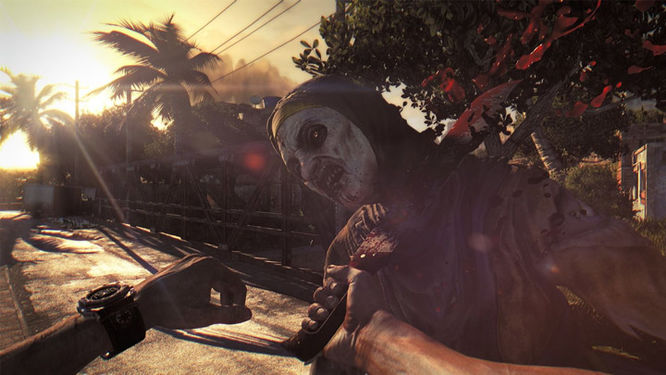
Melee combat is key in Dying Light. The more you fight the more skills you unlock.
Again much like Dead Island you'll come across a large variation of zombie types throughout the game. From your average slow zombies to more dangerous types such as running zombies, sledge hammer wielding zombies and armoured zombies, there's a huge range of undead to get in your way - however, the scariest of all your enemies are the zombies that come out at night. This is where the other major selling point of Dying Light kicks in, the day/night cycle. Yes, just like the real world, Dying Light has a day and night cycle - and wouldn't you just know that going out at night is far more dangerous. The tension that builds as the sun slowly descends on the horizon can be extremely effective. If you don't plan accordingly, you may find yourself out on a limb with nowhere to go as the last of the sunlight dies (hence the name of the game) - and that means you're in trouble.
These night zombies (aptly named Volatiles) are more along the lines of vampires - super powerful and not fond of UV light. We're not sure when it became popular for zombies to become insanely powerful at night (not to mention what biological mechanism might drive it), but it seems to be becoming a common trend. This means that night time game play tends to turn into a more of a stealth based affair that consists of tying your best to avoid these fast running Volatiles, as you scrabble to get back to the nearest safe house, to rest safely until morning. If you're spotted, then you're dead around 90% of the time - that is, unless you've taken the proper precaution of setting up traps, giving yourself a fighting chance. On the plus side exploring at night nets you more experience points, meaning you gain abilities faster, especially once you're capable of fending for yourself. This risk/reward element does shake things up quite a bit and helps to keep what could have been a mundane experience a little more interesting.
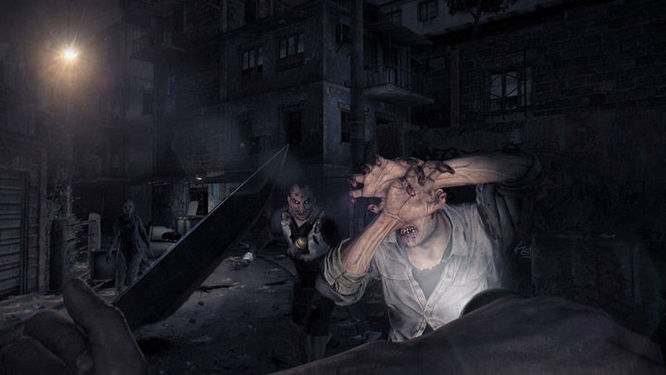
Staying out at night is extremely dangerous. Still, surviving until morning has its rewards.
We were surprised at just how affecting the world of Dying Light could be at times. Some of the faster zombies will sometimes beg for you to stop and scream as you kill them. It can be pretty unnerving, and had us stop dead in our tracks the first time it happened. This isn't the worst example of moral unease however, as the one thing that elicited these feelings more so than anything else in the game was an infected type known as the Screamer. Why? Because Screamers are infected children. Now some of you may already be thinking: there's nothing wrong with killing 'zombie children, they're monsters like anything else', and you'd be correct, but unfortunately the issue here is that these zombie kids don't actually attack you, they just scream in defence attracting larger zombies until you kill the child. Couple this with the amount of gore and you have a highly distasteful experience for some.
Much like Techland's past outings, Dying Light fails in a few key places. Quite noticeably, there are still a fair few bugs to deal with, including the occasional texture pop in, and enemies that hit you when they shouldn't, or appear in places they shouldn't be. On top of that, we also had connection problems when attempting to use matchmaking in the game's multiplayer modes (on PC at least). Now, a lot of these little gameplay bugs could be forgiven if the game was more engaging. This is where the story would be expected to pick up the flack - but sadly, its far too much of a weak and forgettable experience. Populated with uninteresting characters that have no real personality and a bad guy that's ticks most of the boxes on the clichéd villain list. It's also filled with boring missions that feel downright repetitive. Much like in its ancestor Dead Island, you'll find yourself doing the same fetch quests over and over (that at best is bad game design but at worst might be intentional padding), until the game eventually sputters out in a very depressing, button mashing quick time event final boss fight. You'll find that the side quest stories are far more interesting.
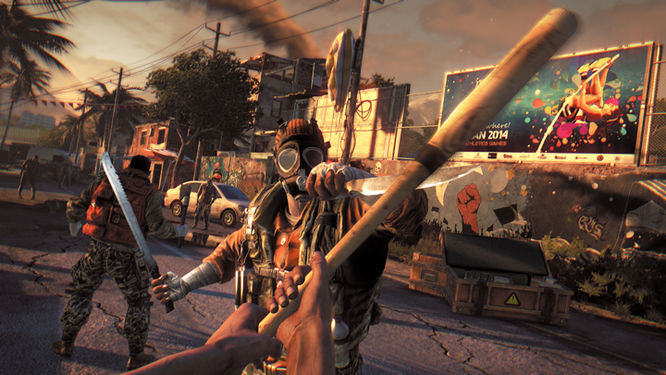
It's not all zombies you fight. These guys just happen to work for the most cliched villain ever.
The unfortunate truth is that Dying Light does nothing new for the zombie genre. The best of Dying Light can be found in its progression/levelling system, parkour gameplay and huge open world, but an uninspiring story and repetitive missions make this an experience that isn't really worth your time. That said if you're a fan of Dead Island then you'll probably enjoy Dying Light.
Format Reviewed: PC








